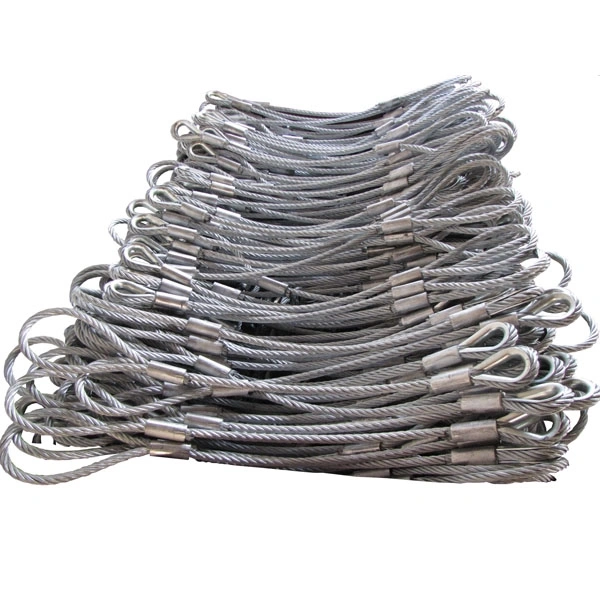How to Select the Right Custom Wire Rope Slings for Your Lifting Needs
Table of contents:
Understanding Load Requirements and Safety Factors
Choosing Between Single-Leg and Multi-Leg Configurations
Evaluating End Fittings Hooks Thimbles and Sockets
Importance of Compliance with Industry Standards
Understanding Load Requirements and Safety Factors
Accurately determining the load requirements is the foundation of choosing the proper custom wire rope slings. The weight of the load, its dimensions, and the type of lift it requires all play a role in identifying the right sling. For example, a heavy-duty wire rope sling is ideal for robust loads but may not offer the flexibility needed for lighter or more complex shapes. Equally crucial is understanding the safety factor, which refers to a sling's maximum load limit divided by its working load limit (WLL). Safety factors ensure that a sling performs reliably under strain, creating a buffer for unforeseen stresses. While most industries adhere to a standard safety factor of 5-to-1, verifying this against your specific application and regulatory requirements offers additional peace of mind when selecting custom lifting slings.
Choosing Between Single-Leg and Multi-Leg Configurations
Wire rope slings come in a variety of configurations, with single-leg and multi-leg designs being common options. Single-leg slings are straightforward and versatile, making them suitable for simpler applications such as lifting equipment or smaller machinery. However, for loads that require added stability, multi-leg configurations are often preferred. These slings come with multiple wire rope legs, which connect to the load at various points, ensuring better load distribution and enhanced stability during lifts. The choice of configuration also depends on factors like the load’s shape, balance, and tendency to shift during a lift. Carefully assessing whether your job calls for straightforward lifting or requires precise balance across multiple points will ensure that your wire lifting slings for sale meet the exact demands of your project.
Evaluating End Fittings Hooks Thimbles and Sockets
The end fittings of wire rope slings play a vital role in connecting the sling to the load or lifting device. It’s essential to choose fittings that not only match your lifting application but also comply with strength and durability standards. Hooks are among the most commonly used fittings, offering quick connect and disconnect options for a range of lifting tasks. Thimbles, on the other hand, are often incorporated to protect the rope’s eye from wear and tear, ensuring that the sling itself lasts longer. For more permanent or heavy-duty applications, sockets provide a reliable and secure connection to machinery or load links. Understanding the variety of end fittings available allows you to select the best match for your custom wire rope slings, balancing functionality with durability for optimized performance.
Importance of Compliance with Industry Standards
Compliance with industry standards is non-negotiable when it comes to custom lifting slings. Standards like OSHA (Occupational Safety and Health Administration) and ASME (American Society of Mechanical Engineers) offer guidelines on sling design, construction, and usage to ensure safety and reliability. Additionally, certain industries such as construction or maritime operations may have their own unique standards that require adherence. Always verify that the slings are manufactured to meet or exceed these standards, as this guarantees not only performance but also reduces liability risks. For instance, heavy-duty wire rope slings in high-stakes environments must undergo rigorous testing to meet safety benchmarks. Ensuring compliance with these regulations provides peace of mind and boosts workplace safety during critical lifting operations.
Selecting the right custom wire rope slings can feel overwhelming given the variety of configurations, materials, and fittings on the market. By focusing on factors such as load requirements, configuration types, end fittings, and compliance with safety standards, you can make informed choices that align with your specific project needs. Invest in high-quality, durable options when exploring wire lifting slings for sale, as the right sling not only enhances operational efficiency but also safeguards the integrity of your team and tools.

Comments
Post a Comment